Musisz być zalogowany/a
-
WróćX
-
Alkatrészek
-
-
Kategória
-
Félvezetők
- Diódák
- Tirisztorok
-
Elektromosan szigetelt modulok
- VISHAY (IR) elektromosan szigetelt modulok
- INFINEON (EUPEC) elektro-szigetelt modulok
- A Semikron elektromosan szigetelt moduljai
- POWEREX elektroszigetelt modulok
- IXYS elektromosan szigetelt modulok
- Elektro-szigetelt modulok a POSEICO-tól
- Az ABB elektromosan szigetelt moduljai
- Elektro-szigetelt modulok a TECHSEM-től
- Przejdź do podkategorii
- Híd egyenirányítók
-
Tranzisztorok
- GeneSiC tranzisztorok
- Mitsubishi SiC MOSFET modulok
- STARPOWER SiC MOSFET modulok
- ABB SiC MOSFET modulok
- IGBT modulok a MITSUBISHI-tól
- MITSUBISHI tranzisztor modulok
- MITSUBISHI MOSFET modulok
- ABB tranzisztor modulok
- IGBT modulok a POWEREX-től
- IGBT modulok – az INFINEON-tól (EUPEC)
- Szilícium-karbid félvezető elemek
- Przejdź do podkategorii
- Drivers
- Tápblokkok
- Przejdź do podkategorii
- LEM áram- és feszültségátalakítók
-
Passzív alkatrészek (kondenzátorok, ellenállások, biztosítékok, szűrők)
- Ellenállások
-
Biztosítékok
- Miniatűr biztosítékok ABC és AGC sorozatú elektronikus rendszerekhez
- Gyors működésű cső alakú biztosítékok
- Késleltetett lapkák GL/GG és AM karakterisztikával
- Ultragyors biztosítékok
- Brit és amerikai szabványos gyors működésű biztosítékok
- Gyors működésű európai szabványú biztosítékok
- Vontatási biztosítékok
- Nagyfeszültségű biztosítékok
- Przejdź do podkategorii
-
Kondenzátorok
- Kondenzátorok motorokhoz
- Elektrolit kondenzátorok
- Jégfilm kondenzátorok
- Teljesítménykondenzátorok
- Kondenzátorok egyenáramú áramkörökhöz
- Teljesítménykompenzációs kondenzátorok
- Nagyfeszültségű kondenzátorok
- Kondenzátorok indukciós fűtéshez
- Impulzuskondenzátorok
- DC LINK kondenzátorok
- Kondenzátorok AC/DC áramkörökhöz
- Przejdź do podkategorii
- Interferencia szűrők
- Szuperkondenzátorok
- Túlfeszültség elleni védelem
- TEMPEST Felfedő emissziós szűrők
- Przejdź do podkategorii
-
Relék és kontaktorok
- Relék és kontaktorok elmélete
- AC háromfázisú félvezető relék
- DC szilárdtest relék
- Szabályozók, vezérlőrendszerek és tartozékok
- Lágyindítás és irányváltó kontaktorok
- Elektromechanikus relék
- Kontaktorok
- Forgókapcsolók
-
Egyfázisú AC szilárdtest relék
- Egyfázisú váltakozó áramú szilárdtestrelék, 1. sorozat | D2425 | D2450
- Egyfázisú AC szilárdtest relék CWA és CWD sorozat
- Egyfázisú AC szilárdtest relék CMRA és CMRD sorozat
- Egyfázisú AC félvezető relék PS sorozat
- AC szilárdtest relék kettős és négyes sorozatú D24 D, TD24 Q, H12D48 D
- GN sorozatú egyfázisú szilárdtest relék
- Egyfázisú AC szilárdtest relék CKR sorozat
- Egyfázisú AC DIN sínes relék ERDA és ERAA SERIES
- Egyfázisú váltakozó áramú relék 150A áramerősséghez
- Kettős szilárdtest relék DIN sínes hűtőbordával integrálva
- Przejdź do podkategorii
- AC egyfázisú nyomtatható félvezető relék
- Interfész relék
- Przejdź do podkategorii
- Magok és egyéb induktív alkatrészek
- Radiátorok, Varisztorok, Hővédelem
- Ventillátorok
- Klíma, Kapcsolószekrény tartozékok, Hűtők
-
Akkumulátorok, töltők, puffer tápegységek és átalakítók
- Akkumulátorok, töltők - elméleti leírás
- Lítium-ion akkumulátorok. Egyedi akkumulátorok. Akkumulátorkezelő rendszer (BMS)
- Akkumulátorok
- Akkumulátortöltők és tartozékok
- UPS és puffer tápegységek
- Átalakítók és tartozékok napelemekhez
- Energiatárolás
- Hidrogén üzemanyagcellák
- Lítium-ion cellák
- Przejdź do podkategorii
- Automatizálás
-
Kábelek, Litz vezetékek, vezetékek, rugalmas csatlakozások
- Vezetékek
- Kábeltömszelencék és -hüvelyek
- Arcok
-
Kábelek speciális alkalmazásokhoz
- Hosszabbító és kiegyenlítő kábelek
- Hőelem kábelek
- Csatlakozó kábelek PT érzékelőkhöz
- Többeres kábelek hőm. -60°C és +1400°C között
- SILICOUL középfeszültségű kábelek
- Gyújtókábelek
- Fűtőkábelek
- Egyeres kábelek hőm. -60°C és +450°C között
- Vasúti vezetékek
- Fűtőkábelek pl
- Kábelek a védelmi ipar számára
- Przejdź do podkategorii
- pólók
-
Zsinór
- Lapos zsinór
- Kerek fonatok
- Nagyon rugalmas fonat - lapos
- Nagyon rugalmas zsinór - kerek
- Hengeres rézfonatok
- Réz hengeres fonatok és borítások
- Rugalmas földelő hevederek
- Horganyzott és rozsdamentes acélból készült hengeres fonatok
- PVC szigetelt rézfonatok - 85 fokos hőmérsékletig
- Lapos alumínium fonatok
- Csatlakozókészlet - zsinórok és csövek
- Przejdź do podkategorii
- Vontatási berendezések
- Kábelsaruk
- Szigetelt rugalmas sínek
- Többrétegű rugalmas sínek
- Kábelkezelő rendszerek
- Przejdź do podkategorii
- Az összes kategória megtekintése
-
Félvezetők
-
-
- Szállítók
-
Alkalmazások
- Bányászat, kohászat és öntöde
- Berendezések elosztó- és kapcsolószekrényekhez
- CNC gépek
- DC és AC hajtások (inverterek)
- Energetika
- Energia bankok
- Faszárító és -feldolgozó gépek
- Gépek műanyagok hőformázásához
- Hegesztőgépek és hegesztők
- Hőmérséklet mérés és szabályozás
- HVAC automatizálás
- Indukciós fűtés
- Ipari automatizálás
- Ipari védőfelszerelés
- Kutatási és laboratóriumi mérések
- Motorok és transzformátorok
- Nyomtatás
- Robbanásveszélyes zónák alkatrészei (EX)
- Tápegységek (UPS) és egyenirányító rendszerek
- Villamos és vasúti vontatás
-
Telepítés
-
-
Induktorok
-
-
Indukciós eszközök
-
-
Szolgáltatás
-
- Kapcsolat
- Zobacz wszystkie kategorie
Humidity sensors - principle of operation, installation

Humidity is the presence of water in the air. The amount of water vapour in the air can affect human comfort as well as many industrial production processes. The presence of water vapour also affects various physical, chemical and biological processes.
Humidity sensors work by detecting changes that alter electrical currents or temperature in the air. There are three basic types of humidity sensors: capacitive, resistive, and thermal (thermally conductive). All three types monitor small changes in the atmosphere to calculate the humidity of the air.
A capacitive humidity sensor measures relative humidity by placing a thin strip of metal oxide between two electrodes. The electrical capacitance of the metal oxide changes with the relative humidity of the atmosphere. The main application areas are meteorological stations, electrical engineering industries, HVAC automation.
Resistive humidity sensors use ions in salts to measure the electrical impedance of atoms. As the humidity changes, the resistance of the electrodes on either side of the salt medium changes.
Thermal sensors conduct an electrical current depending on the humidity of the surrounding air. They are most commonly made of two sensors in one housing - one sensor is encased in dry nitrogen while the other measures the humidity of the air. The difference between the two indicates the humidity.
Application of humidity sensors
Capacitive relative humidity sensors are used in many applications to measure humidity in printers, HVAC systems, fax machines, automobiles, weather stations, refrigerators, food processing, etc.
Because of their small size and low cost, resistive sensors are used in domestic, residential and industrial applications.
Thermally conductive sensors are typically used in dryers, food dehydration, pharmaceutical facilities, etc.
Below are examples and application of humidity sensors:
Domestic: Controlling and sensing humidity in offices and homes is important because higher humidity can affect mood e.g. change in blood flow, feeling uncomfortable. Other application areas include indoor plant farms, cooking, etc.
Industrial: Industries such as chemical, refining, metallurgy where furnaces are used need humidity sensors because high humidity reduces the amount of oxygen present in the air, which can significantly affect the productivity of these industries. Other industries such as paper, textile, food, etc. also require humidity control.
Agriculture: Drip irrigation is a crop growing technique that requires precise humidity. Soil moisture also plays an important role in plant growth. When growing plants indoors or in greenhouses, moisture level testing is essential for their proper growth.
Electronics and Semiconductors: A number of electronic devices are parameterized with respect to the range of humidity in which they will operate properly. Generally, the value is between 10 and 50% humidity. Semiconductor manufacturing facilities must also maintain very precise humidity and temperature values, as even a minute difference can have a huge impact on production.
Medical: Medical equipment such as sterilizers, incubators, ventilators, etc. require humidity control. Humidity sensors are also used in pharmaceutical facilities.
Issues that humidity can cause in industry
In many factories, steam and humidity are daily byproducts of various industrial processes; if not properly maintained, excessive humidity levels can cause a host of problems, resulting in delays, safety hazards and additional expenses.
Even reliable air conditioning may not be enough to achieve the required relative humidity, as the percentage of relative humidity increases as the room temperature decreases.
Different manufacturing facilities have different humidity problems, depending on the specific equipment and products used. Particularly in machine shops, excess moisture can cause condensation, fog or mold buildup that can damage products, equipment and even the facility structure itself.
A safety hazard
Condensation can form on store floors creating a dangerous, slippery environment. Electrical and electronic equipment can also quickly become saturated, posing serious safety and quality risks. Electrical products exposed to high levels of moisture often corrode and reduce insulation resistance, which can eventually cause short circuits.
The problem with labelling
The surface to which the label is applied must not be wet. Condensation may occur on it due to the temperature difference between the packaging and the air in the room. The air must have a relative humidity of about 40-45% for the surface of the packaging to remain dry and for the label to stick. We put labels on fruit, bottles, anything that needs some labelling.
Disrupting drying cycles
Products that require specific drying cycles are also susceptible to moisture problems; if humidity levels are too high, drying times can be severely delayed, resulting in production shutdowns, increased energy consumption, and lost productivity.
Dry food packaging plants are an example. When exposed to excessive humidity, the quality of food products is compromised, which can threaten the health and well-being of consumers. In addition, many insects and insects seek humid conditions, thriving in areas with humidity levels between 70-80%.
Humidity sensors do their job
In order for your manufacturing facility to run at peak efficiency, it is essential to maintain proper humidity levels. Taking care of air quality and humidity levels should be one of the key aspects that every industrial business strives for. Using the highest quality humidity sensors will allow you to precisely control humidity levels in your premises, which will result in increased productivity, as well as ensuring the safety of machinery and equipment, and the comfort of employees or users of a given room.
Related products
Related posts
 Nowości w dziale zasilacze, przetwornice i inwertery – inwertery Premium
Nowości w dziale zasilacze, przetwornice i inwertery – inwertery Premium
 Oświetlenie do obrabiarek– oprawy KIRA!
Oświetlenie do obrabiarek– oprawy KIRA!

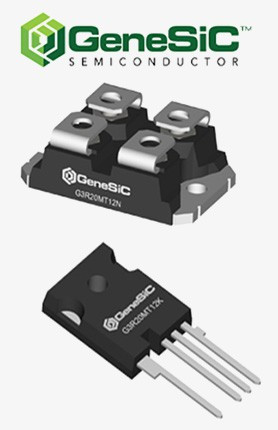
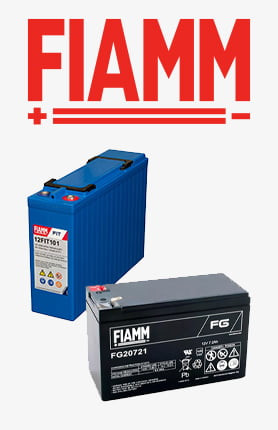
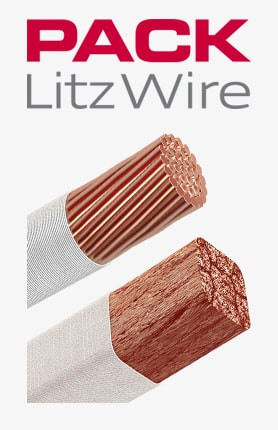
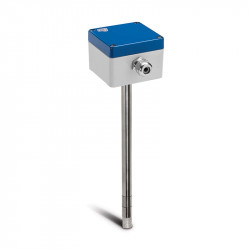
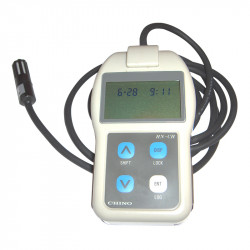

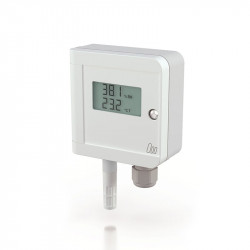

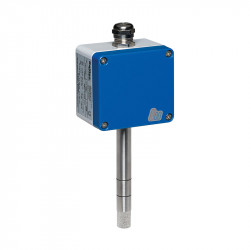
Leave a comment